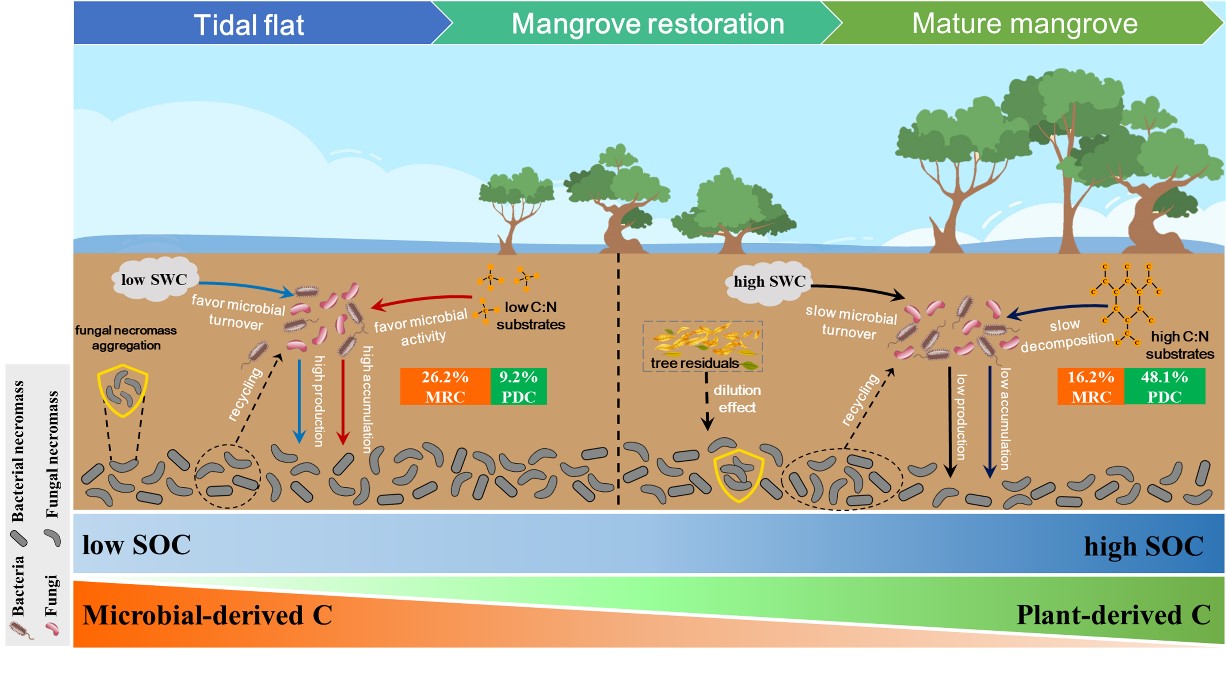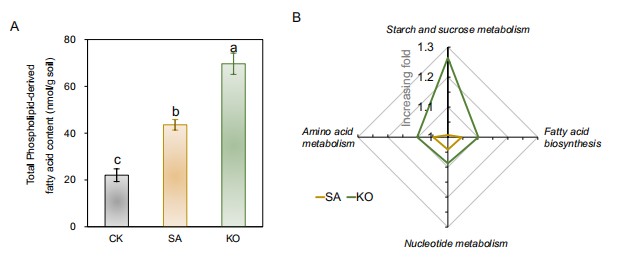Unlocking the Secrets of Coastal 'Blue Carbon': The Microbial Mechanisms behind Mangrove Carbon Sequestration
The research team led by Prof. WANG Faming at the South China Botanical Garden, Chinese Academy of Sciences, has achieved breakthroughs in understanding the formation and microbial regulation of 'blue carbon' in coastal zones. Their work, part of the ANSO initiative, highlights the critical role of mangroves in the global carbon cycle.
These studies, published in Functional Ecology and Global Change Biology, explore the complex interactions between plant and microbial components in mangrove ecosystems. Researchers first examined the soil carbon accumulation in mangroves, revealing that plant sources are the primary contributors, with microbes playing a lesser role. This finding underscores the need for mangrove protection. Then, the team conducted another field experiments in Qi'ao Island’s mangrove conservation area, focusing on the carbon transfer mechanisms from leaves to soil. Advanced techniques like FT-ICR-MS and metagenomics were used to study carbon degradation in mangrove sediments of Sonneratia apetala and Kandelia obovata, uncovering diverse biogeochemical cycling pathways. These findings offer a molecular mechanism perspective, crucial for optimizing mangrove ecosystem restoration strategies.
These research not only add to our scientific understanding of mangroves in carbon sequestration but also provide practical insights for conservation efforts, emphasizing their importance in addressing climate change.
Author: The team of Faming Wang from the Ecological Center of South China Botanical Garden, Faming Wang

Figure 1. A conceptual model illustrates the impact of various pathways in mangrove restoration on the formation of plant and microbial components.
.
Figure 2. Phospholipid fatty ac
id microbial biomass and its partitioning of assimilated plant-C.
(A) The changes in phospholipid derived fatty acid content; (B) C partitioning in SA and KO soils. CK, SA,
and KO represent soils sampled from the tidal flat control, Sonneratia apetala, and Kandelia obovata, respectively.
File Download: